The future of long distance train services through the Channel Tunnel

TL;DR – whatever you read in the press about future long distance train services through the Channel Tunnel is at best only part of the truth, because the reality is complicated
Periodically stories appear in newspapers, on radio and television, and also in the dedicated railway trade press, about future passenger train services through the Channel Tunnel – either new destinations to be offered by Eurostar, or completely alternative operators proposing new services. Most of these stories are based on statements made by players in the railway industry that have a particular incentive to explain the situation from their point of view, leading to inaccuracies in these reports.
This blog post is designed as a general response to those stories – a kind of overall assessment of the future of Channel Tunnel long distance passenger railway traffic, to help someone make sense of the stories that might appear in future.
If new facts emerge, or if there are errors in the text below, they will be corrected and the post updated – with changes explained and listed at the end.
Contents
- What is and is not included in this analysis
- Rationale for new services and new destinations through the Channel Tunnel
- Current situation
- Tunnel, track and station/terminal capacity
- Tunnel capacity
- Track Capacity – UK
- Track Capacity – France
- Track Capacity – Belgium
- Track Capacity – Elsewhere
- Station/terminal Capacity – Passport Control and Luggage Scan considerations
- Station/terminal Capacity – UK
- Station/terminal Capacity – France
- Station/terminal Capacity – Belgium
- Station/terminal Capacity – Netherlands
- Station/terminal Capacity – Germany
- Station/terminal Capacity – Switzerland
- Station/terminal Capacity – elsewhere
- Rolling Stock
- Operators
- Conclusions
- Updates
- Credits
- Creative Commons Images used in this post
What is and is not included in this analysis
This post only concerns long distance passenger rail transport through the Channel Tunnel – passenger trains with seats in them, typically what Eurostar has offered in the past. It does not cover vehicle shuttles through the tunnel (known as LeShuttle), or through freight services.
The focus of the piece is on operations: routes, stations, rolling stock, operators. I am not privy to enough financial information to make an assessment of the economic viability of the options here that are appear operationally possible.
Rationale for new services and new destinations through the Channel Tunnel
The idea to serve destinations other than London, Paris and Bruxelles (and stations between them) has a long history that dates at least as far back as the aborted Nightstar project, and periodically Eurostar has put forward new daytime destinations – although it has succeeded only in serving Amsterdam via Rotterdam on a permanent basis, and some other destinations in the past with temporary, irregular or seasonal services.
Even on Eurostar’s core routes, service levels today are lower today than they were a decade ago (part caused by bureaucracy post-Brexit, and COVID denting Eurostar’s finances), and through passenger services have never achieved the passenger numbers hoped before the opening of the Channel Tunnel. At least until the end of 2024 Eurostar has no plans to expand its offer to/from London.
Potential new operators look at this situation and see opportunities. London and Paris are the two largest urban centres in Western Europe, and – apart from the Channel Tunnel itself – there is high speed infrastructure the whole way between the two. Examples where rivals to state incumbents have started rail services and made a success of it elsewhere in Europe (Italo in Italy, Trenitalia rivalling SNCF in France, liberalisation of high speed rail in Spain) give an idea of what could be possible to London, rivalling Eurostar that some see as over-priced and complacent. Passenger demand for rail services, post-pandemic, is strong, and the environmental rationale for modal shift to rail is clear.
So the rationale for the expansion of services is clear enough. The question is whether it is possible, and that is what this blog post will seek to assess.
Current situation
Long distance passenger trains through the Channel Tunnel are currently operated only by Eurostar International Limited, a wholly owned subsidiary of Eurostar Group.
These trains use the Channel Tunnel, and high speed railway infrastructure either side of the tunnel – High Speed 1 between London St Pancras and the tunnel, UK side, and predominantly high speed infrastructure in France, Belgium and Netherlands to reach current destinations – Amsterdam, Bruxelles and Paris. Previously Eurostar also intermittently ran services to Disneyland Paris, Lyon, Marseille and Bourg Saint Maurice, although these services are currently not operating. Eurostar currently operates around 26 services each way through the Channel Tunnel each day at summertime peaks, down from around 30 trains each way a decade ago.
Eurostar Group is owned 55.8% by SNCF (French state owned railway company), 19.3% by Caisse de dépôt et placement du Québec (Canadian institutional investor), 18.5% by SNCB (Belgian state owned railway company), and 6.4% by Federated Hermes (American investment manager).
Available routes
Long distance passenger services through the Channel Tunnel are comprised of three sections of route: the part above ground in the UK, the Channel Tunnel itself, and then parts above ground in France, Belgium, Netherlands and any subsequent countries. Any assessment of future services needs to start here: where would new services run? Would there be more trains on existing routes, or trains on new routes?
Available routes – UK
There is essentially only one available route – High Speed 1 from the St Pancras Station in London to the Channel Tunnel, via Stratford International, Ebbsfleet International and Ashford International.

Re-using the old Eurostar terminal at Waterloo can be eliminated as an option – these platforms are now used by regular UK rail services, and to reach Waterloo you need a train that can run on 750v third rail dc electrification, and has the restricted UK loading gauge (see Rolling Stock below). Waterloo is out.
Through routes to anywhere else in the UK are only fractionally easier – there is a connection from High Speed 1 to the North London Line (see OpenRailwayMap here) that then could be used to connect to the West Coast Main Line, but while this all has overhead electrification at 25kV 50Hz ac, loading gauge problems (and as a result limits on rolling stock), and Passport Control issues (see below) still apply. Connection to the Lea Valley Lines at Stratford (see OpenRailwayMap here) is no good, as the connecting curve is the wrong way, while leaving High Speed 1 at Barking (see OpenRailwayMap here) leaves you with a contorted route through north London. High Speed 2 will also not connect to High Speed 1. So long distance routes serving any stations in UK other than those along High Speed 1 can be eliminated as well.
The only choice for the future is hence which stations to serve along High Speed 1, and whether to use the entirety of the line, or only part of it.
Signalling systems required for the UK part of the route are hence clear – the requirements are the same as in France, with both KVB and TVM430 required.
How St Pancras works is well known – all of Eurostar’s services to the UK terminate there, but there are problems with terminal capacity (see below).
Stratford International – despite the name – has never been served by international trains, and there are no passport control or bag scanning facilities there currently (although installing these would not be complicated). Also the track layout – with no way to switch from the eastbound to the westbound track on High Speed 1 – means that services could not begin or terminate at Stratford. So trains departing from St Pancras could additionally call at Stratford, but services could not start or end there.
Temple Mills depot – with a connecting curve above Stratford International station (see OpenRailwayMap here) – would be used for stabling trains that start and end in London, as is currently done by Eurostar.
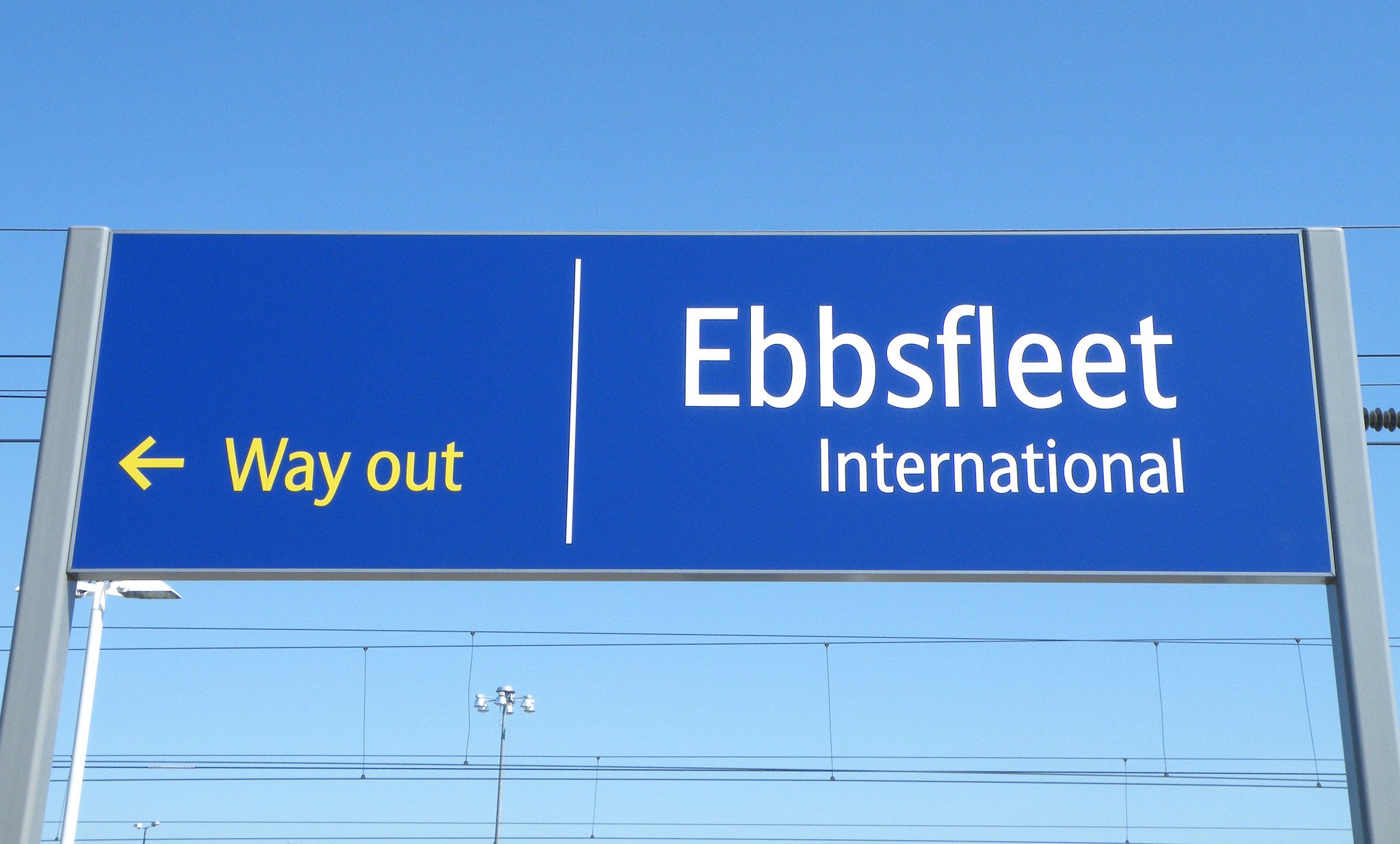
Trains could possibly begin and terminate at Ebbsfleet International, because there the track layout would allow a change of direction, although there is just one single platform where this would be possible (you can work it out from OpenRailwayMap here). However at Ebbsfleet there is nowhere to stable trains.
Ashford International is somewhat easier – terminating trains at either of the two international platforms would be possible (see track layout on OpenRailwayMap here). Problems with loading gauge and electromagnetic interference for Eurostar’s Siemens e320 trains have been overcome at Ashford as well, so no problem with that. However the depot at Ashford has only 750v dc electrification, so cannot be used by any train other than a Eurostar e300 (see Rolling Stock below). The nearest stabling point would be Dollands Moor (see OpenRailwayMap here), close to the Channel Tunnel.
This then leaves us with only two options for routes, UK side – either run from St Pancras to the Channel Tunnel (with or without interim stops at Stratford International, Ebbsfleet International and Ashford International), or begin/terminate services at Ebbsfleet or Ashford, but doing so would require fast turnarounds due to limited platform capacity, and for trains to be stabled somewhere a long way from either.
Available routes – France, Belgium and beyond
The choice of routes beyond the French portal of the tunnel is much more varied than UK side. Indeed from the junction just north of Calais-Fréthun station (see OpenRailwayMap here) it is possible to access either the French classic railway network (25kV 50Hz ac electrification, speeds 160-200km/h) towards either Calais/Dunkerque or Boulogne, or the high speed network (25kV 50Hz ac electrification, 300km/h) towards Lille. Loading gauge is likewise not a problem on any of these lines.
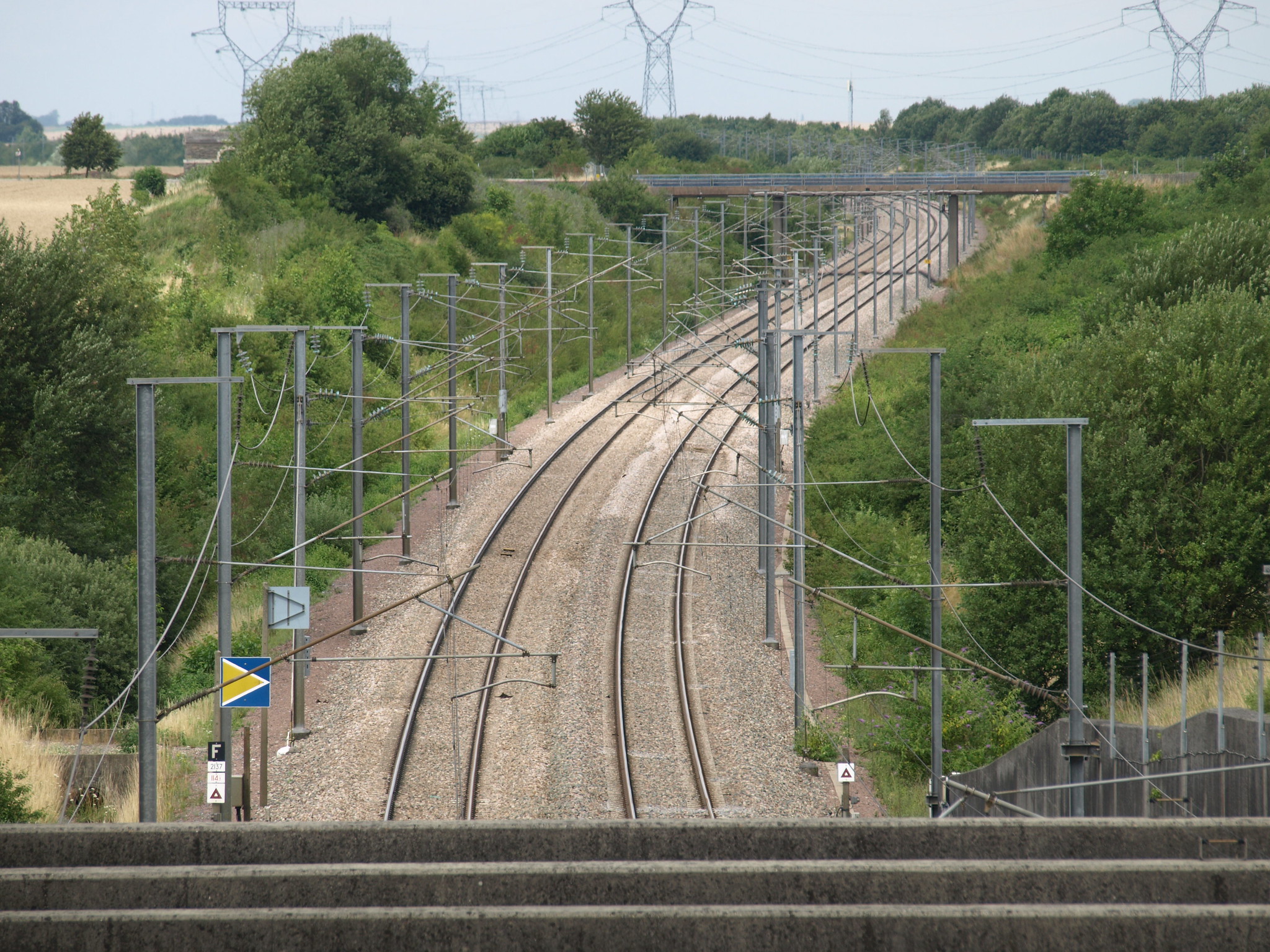
The most obvious routes take the LGV Nord high speed line to Lille first (through Lille Europe station) and then take either the branch towards Bruxelles and onto HSL 1, or the rest of LGV Nord towards Paris.
KVB signalling system is needed for the French classic network in all cases (it is needed to access Paris Nord after exiting LGV Nord). TVM430 signalling is required for LGV Nord. Both of those are required for High Speed 1 in the UK as well. Electrification as far as Paris is also all 25kV 50Hz ac. So KVB, TVM430 and 25kV 50Hz ac are, for now, the minimum requirements.
The further you go into France, so technical requirements get more complicated. Beyond Paris, the older TVM300 signalling system is required to run towards Lyon (LGV Sud Est) or Tours (LGV Atlantique), and while those lines are 25kV 50Hz ac, the stations off the lines (such as Lyon Part Dieu or Bordeaux St Jean) are wired at 1.5kV dc.
Eventually TVM will be replaced with ETCS – likely from 2025 on LGV Sud Est and LGV Atlantique, but only around 2030 on LGV Nord (and indeed through the Channel Tunnel and on High Speed 1 – implementation on all three is supposed to be coordinated). All of this has implications for the choice of rolling stock for future services (see below) – both in terms of the requirements for new stock, and whether existing stock might no longer be appropriate on lines that are subsequently upgraded.
Running beyond France adds additional technical complexity.
Bruxelles Midi, like the rest of the Belgian classic network, is wired at 3kV dc, and currently the Belgian TBL safety system is required to run there. By the end of 2025 this should no longer be required, and ETCS will be able to be used instead (more about this from Infrabel here) – and indeed from 2026 all trains running in Belgium must be equipped with ETCS – this also has rolling stock implications (see below).
Running to Netherlands requires 1.5kV dc, ETCS signalling to use the high speed line HSL Zuid, and ATB for the classic network (eventually to be replaced by ETCS, but work is not proceeding as swiftly as in Belgium).
Running to Germany or Switzerland additionally requires 15kV 16.7Hz ac, and for Germany PZB and LZB safety systems. All of Switzerland, and Barcelona Sants, can be reached with ETCS only, but going further into Spain requires ASFA. 25kv 50Hz ac is sufficient for standard gauge lines in Spain. Italy requires 3kV dc, and BACC. Going even further beyond any of these will add even more technical complexity.
Overall, running in northern France is simplest. Routes further into France, or into Belgium and beyond, present some significant but not insurmountable hurdles, some of which may be eventually reduced once ETCS is prevalent. But the constraints as to where to run are not imposed by the network or the technical complexity in France, Belgium or beyond.
Tunnel, track and station/terminal capacity
Once you have worked out where it might make sense to run, the next question is: does capacity exist to run there?
Tunnel capacity
The Channel Tunnel was designed for standard running with 10 trains per hour (6 minute headways) per direction (see this 1989 paper about its design), with the opportunity to accommodate 15 trains per hour (4 minute headways) at peak.

Theoretically there can be up to 7 truck shuttles an hour, 4 car shuttles an hour, and 3 Eurostar trains an hour through the tunnel – so 14 trains per hour, leaving 1 slot spare, and assuming through freight services – that have never reached the projection – can be run at off-peak hours. How often the Channel Tunnel ever runs at this level – 14 trains per hour – was impossible to determine for this piece, as a full timetable of when truck shuttles run at 7 trains per hour is not available.
Eurostar’s services have also dropped slightly in recent years. In 2024 the busiest day of Eurostar services I could find – a peak summer Friday – had 16 trains from Paris to London, and 10 from Bruxelles to London. This compares with 19 from Paris and 11 from Bruxelles in the summer of 2013 (see historic Eurostar timetables here – .rar files need to be decompressed).
With regard to tunnel capacity, it suffices here to say that there is definitely capacity for more long distance passenger trains off-peak, and probably at least 1 slot per hour available even at the highest summer peak times.
Track Capacity – UK
Up to 3 Eurostar trains per hour per direction, plus 4 Southeastern high speed trains per hour. The differences in speed (Eurostar – 300km/h, Southeastern – 225km/h) and stopping patterns (Southeastern stops at Stratford International, Ebbsfleet International, Ashford International and not all Eurostar trains ever did and none currently do) mean it will not be possible to use capacity as effectively here as through the Channel Tunnel where all trains have the same speed and stops, but there is capacity on High Speed 1 for at least another 2 trains per hour. No problem here.
Track Capacity – France
The section of LGV Nord between Calais and Lille is one of the least used high speed lines in France, so no issue, and indeed no problem the whole way as far as where the spur from Arras joins LGV Nord (see OpenStreetMap here). Even the section between Arras and Paris Gare du Nord (the most used part of LGV Nord) should present no problems – this normally has 6 or 7 high speed trains an hour on it, meaning capacity for at least 2 more trains per hour. LGV Est (to Strasbourg) has plenty of capacity, but LGV Sud Est (to Lyon) does not – until ETCS is installed (supposedly 2025), but given the rolling stock questions (see below), running to Lyon before 2025 is unlikely anyway – so basically there is capacity on French high speed lines wherever anyone might ever want it. Same for French classic lines that have been under-used for decades. Routing through France to get to Basel (Switzerland) might run into path conflicts between Strasbourg and Basel or, until 2025, if LGV Sud Est and a route via Dijon were used instead – but here too nothing is insurmountable according to the timeframes imposed by other aspects of the operations.
Track Capacity – Belgium
Where the high speed line meets the regular rail network at Hal and runs as Line 96N to Bruxelles, there is the possibility for some path conflicts, but given there are 2 tracks for stopping trains and 2 tracks for high speed trains, these can likely be resolved. So running to Bruxelles Midi should be no problem. Beyond Bruxelles Midi is more problematic – not least because the Midi-Nord tunnel is at capacity at peak times, but running off peak would work. Even at peak reversing at Midi and running via Gare de l’Ouest would be an option. The complex and slow infrastructure towards Antwerpen (necessary to run to Netherlands) is likewise a potential bottleneck, but overall 1 more train per hour at peak, at least 2 off peak, through Bruxelles and northwards towards Antwerpen and Netherlands, and eastwards towards Germany, should be possible.
Track Capacity – Elsewhere
HSL Zuid in Netherlands has extra capacity, and runs as far as the edge of Amsterdam, so would not present major headaches. Köln is a bottleneck in Germany, but more in terms of the station (see below) than in terms of track capacity. Were trains to ever reach Switzerland, paths between Basel and Zürich at peak times could be a problem, off peak would however work. Generally, track capacity is not going to prove to be the show stopper for any of these destinations.
Station/terminal Capacity – Passport Control and Luggage Scan considerations
Long distance trains that use the Channel Tunnel are subject to two constraints that generally do not apply to other rail services. Both a passport control and a luggage scan have to be performed before a passenger boards the train, or this has to be done external to the train somewhere en route (so called “de-training” – basically ask everyone to get off the train with their bags somewhere, and then re-board again).
This poses operators a conundrum.
For new operators that might try to rival Eurostar, do they simply opt to use terminals at the stations used by Eurostar where the infrastructure for passport controls and luggage scans is in place already? This will limit the routes they could operate.
For stations beyond those currently served by Eurostar – whether these would be served by Eurostar or someone else – what is the solution? To install passport control and luggage scan infrastructure? To hope passengers will stomach an extra stop en route for de-training? Or to lobby for a change in the law to mean passport or luggage checks are performed somehow differently?

Here I am going to make some judgment calls. Due to the currently fraught state of the discussion in Britain about immigration, the UK is not going to abandon so-called juxtaposed controls – this means that passports are controlled before a passenger leaves French or Belgian territory, and that will continue to be the case. See the background of this system here.
The only question then is how and when passports could be controlled. At the moment this is done in booths in the stations (Paris Gare du Nord, Bruxelles Midi etc.), but theoretically could be done by UK Border Force staff on board moving trains before these trains reach the Channel Tunnel. However at the time of writing, UK Border Force has neither the technology nor the political will necessary to switch to checking passports on board international trains rather than in the stations. Maybe some operator in the future can persuade the UK to make this change, but for now my assumption is that passports will need to still be checked in stations in the future. This is probably the most major constraint on future long distance train operations through the Channel Tunnel.
At the moment passengers at Eurostar terminals are subjected to airport style checks – not only is every item of luggage scanned, but passengers are asked to remove watches, belts etc. – this is notably more strict than the scans to board AVE trains in Spain, where only bags are scanned. While I can find nothing in the 1994 Channel Tunnel (Security) Order (full PDF here) that makes this obligatory, I nevertheless see no will from operators (current or future) to stop doing this, although somewhat lessening the thoroughness of scans so as to speed them up could be possible. However given luggage scans can be conducted at the same time and same place as passport controls, making a change here is not the highest priority. Hence the default is that both luggage and passports will continue to be checked in stations in future.
I also see the “de-training” option – whether passengers disembark somewhere en route for passport and luggage checks – as an inadequate solution for anything except irregular leisure trips. Eurostar used to get passengers on its Lyon Part Dieu – London trains to disembark in Lille Europe for this, making the Lyon – London trip almost an hour longer than in the other direction. But even from a rail operations point of view this is inadequate, as a train is left blocking a platform for up to an hour. So “de-training” will not be considered for anything except niche leisure cases.
Station/terminal Capacity – UK
Stations in UK with the necessary infrastructure already:
– London St Pancras (in use)
– Ebbsfleet International (not currently in use, but has been used in the recent past)
– Ashford International (not currently in use, but has been used in the recent past)
Stations in UK where infrastructure could be reasonably easily added:
– Stratford International
The problem at St Pancras is not that the infrastructure exists, but whether it is adequate to process passengers fast enough. As this 2022 story explains, passenger throughput at St Pancras has dropped at St Pancras from 2200 passengers per hour to 1500 per hour, due to the additional time taken to perform passport checks, post-Brexit. Eurostar has tried to address the problem with its pilot of the biometric SmartCheck system in 2023, but that only applies to the UK passport check and not the French one, and it is the latter that is the bottleneck. Furthermore with the Etias Schengen border system due to be rolled out in 2024 (exact date tbc), the time to check passports at St Pancras is likely to increase further, and so throughput will drop even more. With Eurostar’s e320 trains seating 900 passengers, and its older e300 trains 750 people, the current throughput of the terminal limits capacity to just 2 departures per hour – if trains are to leave full.
A solid and reasonable solution for this problem – a kind of UK-Schengen mutual recognition system, or an automated Schengen digital or biometric entry system – is politically impossible at present, as the UK Government would not sanction such a thing as it would call one of the core aspects of Brexit – border control – into question. A fix for this should be high on the list of priorities for a new UK government with a Labour Prime Minister in late 2024 or early 2025 in the UK, but change before then is impossible, and even then unlikely. The problem in particular is that at St Pancras the terminal is so physically constrained that there is simply no place to put the extra passport booths that would be needed to increase passenger flow.
This problem is exacerbated still further by the decision by Eurostar, post-COVID, to suspend stopping their trains at both Ebbsfleet and Ashford (and this will persist throughout 2024). As terminals in both of those stations are not as excessively overcrowded as the one at St Pancras, allowing passengers to board there – and perhaps even with a strong financial incentive to persuade passengers to do so, or some kind of combined ticket with Southeastern trains – would increase total throughput. A more radical solution would be to open Stratford International for international passengers – a good option for London as Stratford is so well connected by public transport. At the moment I see no appetite for any of these solutions from Eurostar, but it could be something rival operators could examine.
The platforms at St Pancras are not the capacity constraint – 6 full length (400m) platforms are available for international services.
Maintain the status quo – St Pancras only, and no changes to the passport regime – and there is only a tiny bit of spare capacity for additional services in the early morning or late evening hours, and possibly a train or two in the midday lulls on weekdays. Any potential operators could of course bid for capacity currently used by Eurostar, and win, but that does not increase capacity overall – just re-allocates it. The only way to make a meaningful difference to overcome this station/terminal capacity constraint, short term, is to somehow lessen the pressure on St Pancras by using Ebbsfleet and Ashford, and possibly even Stratford.
Station/terminal Capacity – France
Stations in France with the necessary infrastructure already:
– Calais-Fréthun (not currently in use, but has been used in the recent past)
– Lille Europe (in use)
– Paris Gare du Nord (in use)
– Marne-la-Vallée–Chessy (for Disneyland) (not currently in use, but has been used in the recent past, allows only departures northbound, no through traffic)
– Bourg Saint Maurice and Moûtiers-Salins-Brides-les-Bains (for ski trains) (not currently in use, but have been used in the recent past)
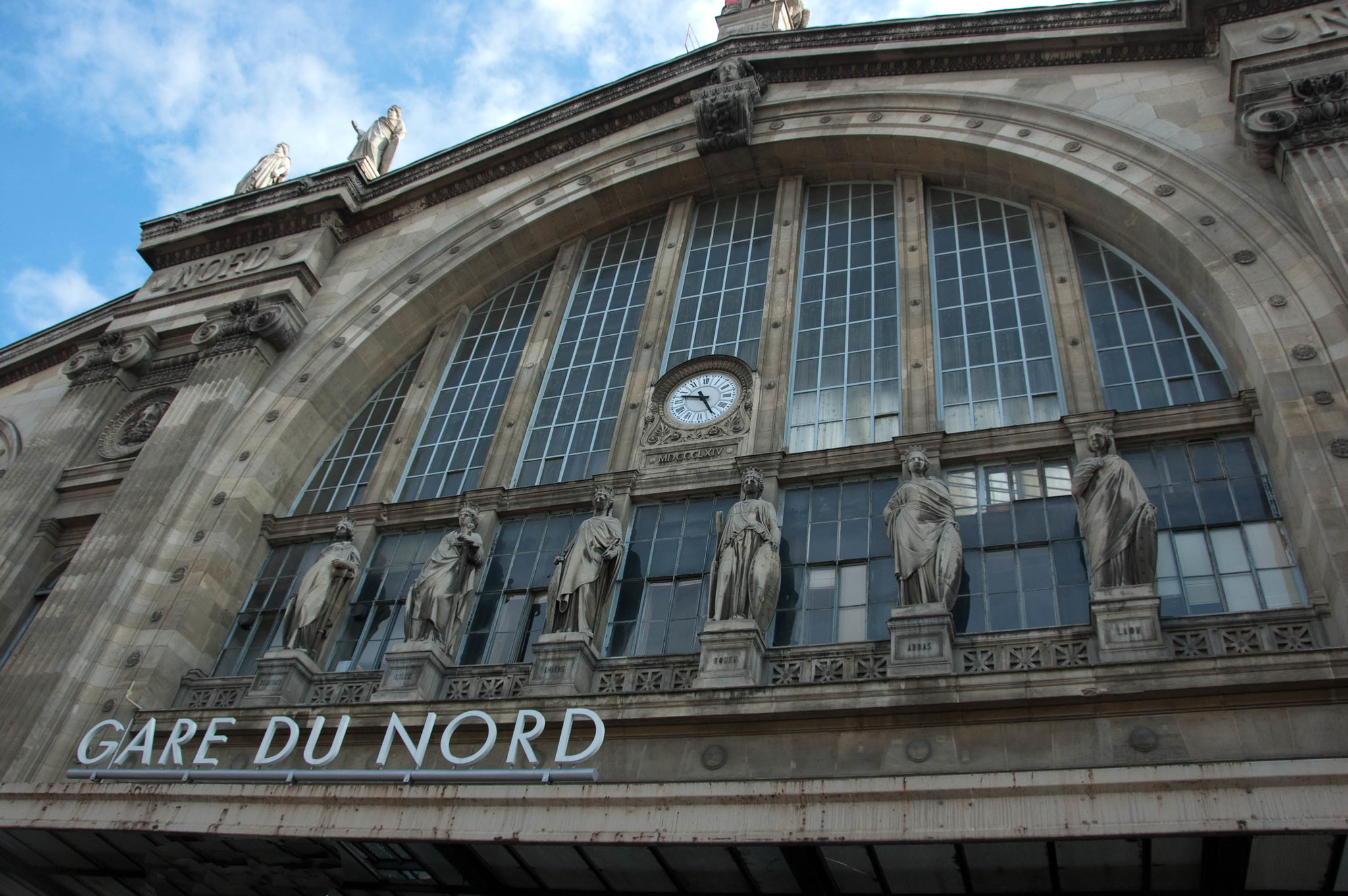
Station and terminal capacity is not such a major constraint at Paris Nord as at London St Pancras, but things can get busy for passengers at peak times. Throughput for passport checks (facilitated by passport gates for passengers exiting France) and luggage scans is not a constraint to the same extent as in the UK, and 4 secure platforms offer adequate capacity. Likewise Lille Europe and Calais-Fréthun (mothballed in the same way as Ebbsfleet and Ashford) likewise have adequate capacity – both in terms of passenger throughput and platforms.
Marne-la-Vallée–Chessy, Bourg Saint Maurice and Moûtiers-Salins-Brides-les-Bains do not especially concern us here, for their use has been for intermittent leisure trains in the past. Marne-la-Vallée–Chessy could be a destination for a kind of “OUIGO-star” low cost train serving greater Paris were Gare du Nord too expensive, but that is a financial rather than a capacity constraint.
There are more serious problems with other possible destinations in France. Details of platforms at French stations can be found here. There is no viable way to cordon off a platform for passengers post-passport check and bag scan at Lyon Part-Dieu station – the station is already bursting at the seams. Even Lyon-Perrache, less well connected, has no easy way to separate passengers by different type of train. Likewise there is no obvious way to do it at Strasbourg where the only platforms long enough to accommodate 400m trains are mixed-use with other long distance and regional services. Even Marseille Saint Charles presents problems – the platforms to the sides at this terminus station are too short, with the 400m+ platforms placed centrally. Only Bordeaux St Jean – where Platform 1 could be used – looks viable for adaption. Dijon – while likely not significant enough to serve on its own – could possibly work as a stop for trains to/from Switzerland (see below). So while the passport check and bag scan regime is at is, forget through services to other French destinations – “de-training” in Lille, for occasional services is the best you will get.
Station/terminal Capacity – Belgium
Stations in Belgium with the necessary infrastructure already:
– Bruxelles Midi
The Eurostar terminal at Midi might be small, but there is sufficient capacity there for a moderate expansion of services, not least as platforms 3 and 4 at the station have been adapted for through trains from Amsterdam to London, in addition to terminus platforms 1 and 2.
The only other Belgian stations that merit consideration are Antwerpen Centraal and Liège-Guillemins. Eurostar trains transit Antwerpen en route from London to the Netherlands but do not stop, but given the station is only 35-45 minutes from Bruxelles Midi, depending on the type of service, it has never been justifiable to secure one of the underground level platforms for London services. Liège would be easier – Platform 1 there is both long enough and easy enough to secure – but that would be served by trains onwards to Germany, and the German side of the border has its own problems (see below). So terminals are only of marginal importance regarding future plans for serving Belgium.
Station/terminal Capacity – Netherlands
Stations in Netherlands with the necessary infrastructure already:
– Rotterdam Centraal
– Amsterdam Centraal (a planned closure of this terminal is temporary)
Rotterdam and Amsterdam are the obvious destinations from London, and the capacity at the Amsterdam terminal – just 250 passengers per train – has been a major constraint, and that is why after a 6 month closure the capacity there will be increased. Capacity at Rotterdam – a modern station – is not a problem. The only other stations it might make sense to serve – Schiphol Airport and Utrecht Centraal – are both close enough to Rotterdam and Amsterdam, and capacity at both constrained enough, to mean effort to serve London from either has not been undertaken, nor is it likely. So here too terminals are only of marginal importance regarding future plans for serving Netherlands.
Station/terminal Capacity – Germany
Stations in Germany with the necessary infrastructure already:
none
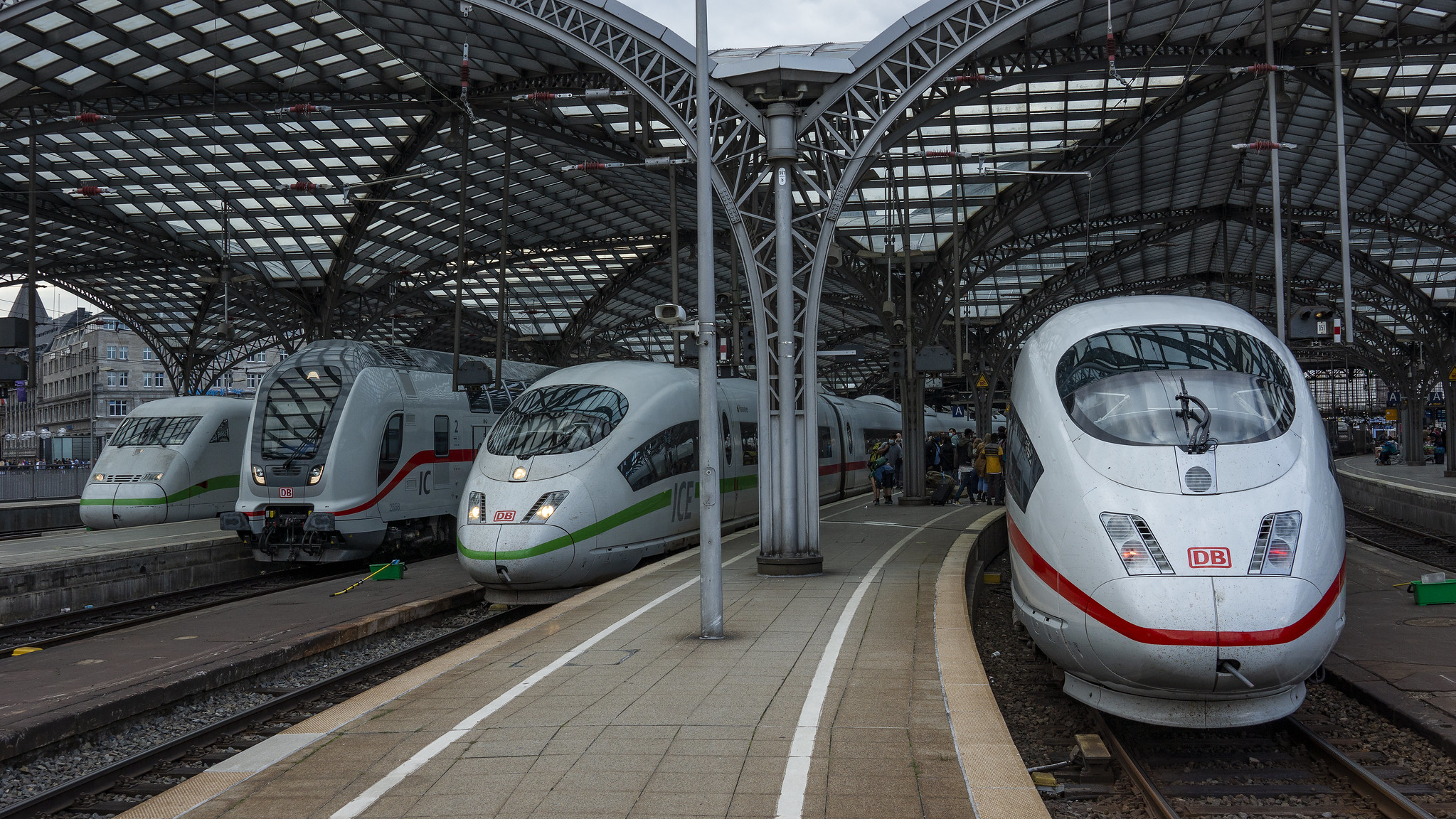
Ever since Deutsche Bahn ran a test ICE train to St Pancras in 2010 (the cover picture for this post), everyone has been awaiting through services from Germany to London. But problems with stations is one of the main reasons why this has never happened. Were a train from Germany to run through Belgium, it would be desirable to stop at Köln Hbf and Aachen Hbf, and both stations are congested and have no suitable platforms that could be cordoned off for passengers after passport controls and bag scans. Düsseldorf Hbf would be easier (platforms 19 and 20 could be used), but running to Düsseldorf without a stop at Köln would be a rather peculiar outcome.
Further south Frankfurt (Main) Hbf would work at a push, where one of the platforms to either the north or likely better the south side of the hall could be used. But other stops en route to either Belgium or France – Frankfurt Flughafen, Mannheim Hbf, Saarbrücken Hbf and Karlsruhe Hbf – suffer the same problems as other German stations, namely overcrowding and difficulty separating off a platform for UK-bound services. Given some of these services would also likely call at Strasbourg – likewise problematic (see above) – the prospects here look bleak.
Stuttgart Hbf is currently being rebuilt, and the future version with through platforms would be much harder to adapt for Channel Tunnel services than the current terminus station. München Hbf, were services from London to extend that far, would however possibly work – it is a terminus station with a lot of platforms.
So – basically – other than Frankfurt and München, stations in Germany present a major problem. Only some very expensive rebuilding, or some radical change of policies regarding UK borders is going to make through trains to Germany possible.
Station/terminal Capacity – Switzerland
Stations in Switzerland with the necessary infrastructure already:
none

Switzerland is perhaps not as complicated to serve as it might originally look. Both Basel SBB and Genève have semi secured platforms for trains that used to arrive at each from France – where customs controls used to be performed for arriving passengers. There is 1 400m semi secure platform at Basel SBB, and 2 at Genève – details of station platforms in Switzerland are here. Basel SBB is about to be partially rebuilt though – I cannot easily assess how these plans will impact whether trains from London could easily be accommodated.
However operating services through Basel SBB onwards to Zürich HB would render the situation in Basel SBB more complicated (one of the more congested and harder to cordon off through platforms would have to be used). Upon reaching Zürich, using either platform 3 (north side) or 18 (south side) of the terminus platforms might, at a push, be possible.
A problem for services to Switzerland would be what stations, if any, could be served en route. Strasbourg is problematic (see above), Mulhouse too close to Basel to justify adapting, and the secure platform at Marne-la-Vallée–Chessy is a terminus platform, not a through platform. That leaves Dijon and Lille Europe as the only viable interim stops. With a journey time over 5 hours from Basel and Genève, and over 6 hours from Zürich, this would be stretching the boundaries of viable services. So stations are not really the constraint for Switzerland, but running from here to London is also far from simple.
Station/terminal Capacity – Elsewhere
The only country a viable daytime train distance from London is Luxembourg (running through France, rather than through Belgium), but here too the platform setup at the station is complicated – at least for 400m trains. 200m trains, at the terminus platforms, could possibly work.
Adapting any Spanish high speed station would not be complicated as pre-boarding bag scans are normal in those stations, but even Figueres-Vilafant, Girona or Barcelona Sants are upwards of 7 hours from London, so likely not viable. Italy or Austria are even further, so are not examined here. So other than Luxembourg, destinations anywhere else look unviable.
Rolling Stock
General considerations
A myth has long persisted that passenger trains that are allowed to transit the Channel Tunnel need to be close to 400m in length, so as to allow a door to be next to an emergency exit to the rescue tunnel. However as far as I can tell this rule no longer applies, if it ever did – there is no reference to it in the latest (2017) Document de référence du tunnel sous la Manche pour la reconnaissance mutuelle des véhicules ferroviaires (PDF here) that stipulates the requirements for trains to operate through the tunnel. More in English, on the Internet Archive here. We also know that DB’s ICE 406 series trains were approved to run in the tunnel in 2013 – and they are just 200m long. Even two coupled would not fulfil the 400m rule, as there is no way for a passenger to move between the two parts, were two of them coupled together. So if a train fulfils the other technical requirements relating to acceleration, weight, signalling, fire safety etc., then the train can be approved to operate.
Existing rolling stock
Three types of passenger rolling stock have been approved for use in the Channel Tunnel, of which two types are in everyday use.
Eurostar e300 / TMST
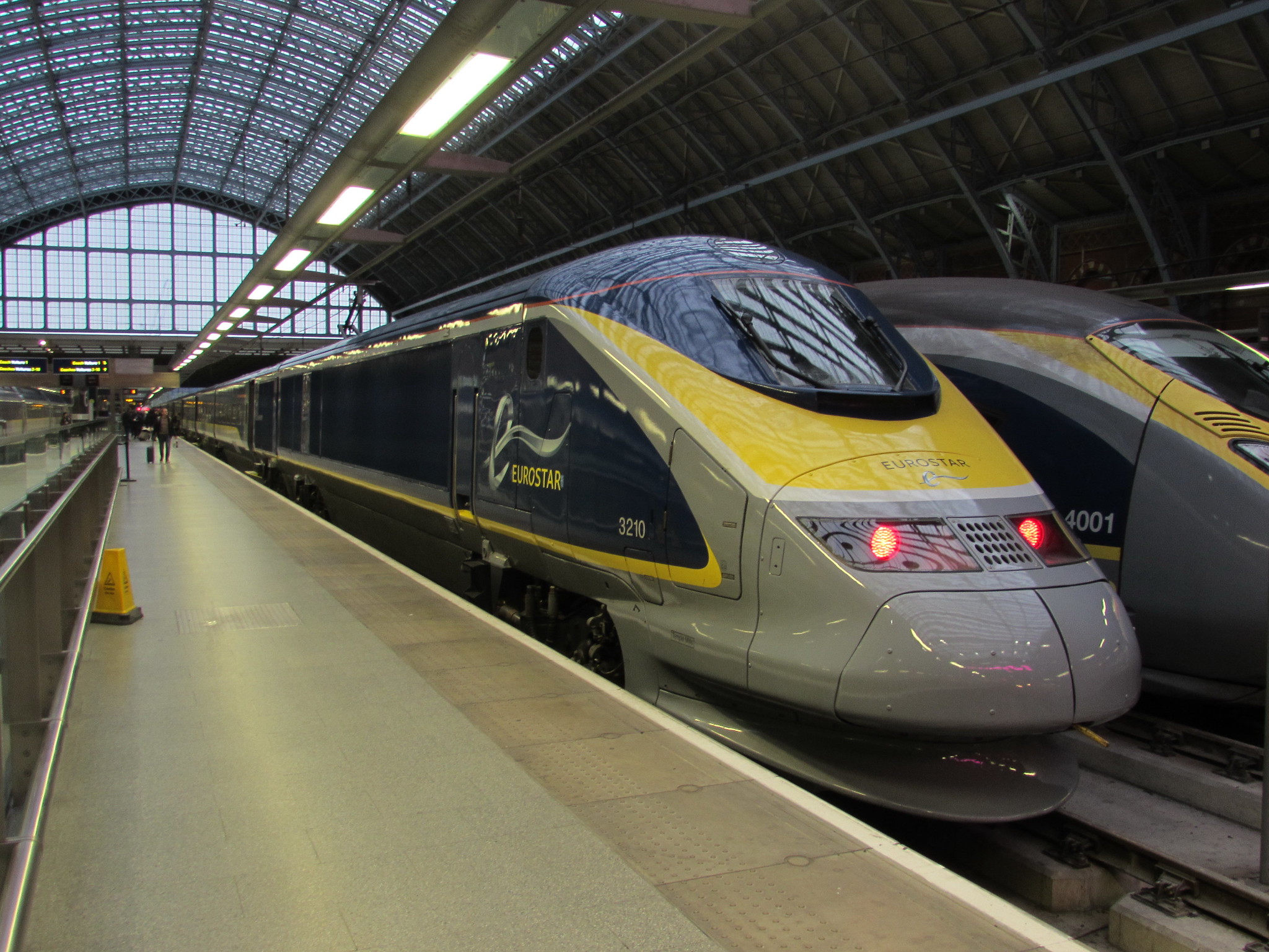
The original Eurostar trains, in service since the Channel Tunnel was opened. These trains are composed of two power cars, 18 carriages, seat 758 passengers and are 378m in length. 38 of these trains were built, 16 have been scrapped, 10 are in long term storage, 1 preserved and 11 are in operation – all for Eurostar.
Operation of these trains is subject to some constraints. First, they have never been permitted to run outside UK, France and Belgium, and cannot run under 15kV electrification – so cannot operate to Germany or Switzerland. They are fitted with neither ETCS nor ATB, so are also not permitted in Netherlands. From the start of 2026 every train running in Belgium needs to be equipped with ETCS, so operations of these trains to Bruxelles will likely cease as well. When LGV Nord is eventually switched over to ETCS – probably around 2030 – service will have to end there too. They are the only Eurostar trains built to the UK loading gauge, so were the only trains able to serve London Waterloo – but today this does not help us (see Routes above).
This means that these trains can only realistically be deployed as a stop-gap solution for increased capacity – Eurostar could deploy more of them, freeing up e320 trains for other tasks. Or, in theory, they could be sold or leased to another operator – but given Eurostar Group is more than 50% owned by SNCF, a company notorious for scrapping trains rather than letting them fall into the hands of rivals, it is unlikely anyone except Eurostar will ever use these trains. In short: don’t hold your breath that these trains are the solution for future services through the Channel Tunnel, although were Eurostar to change its strategy they could be helpful short term.
Eurostar e320
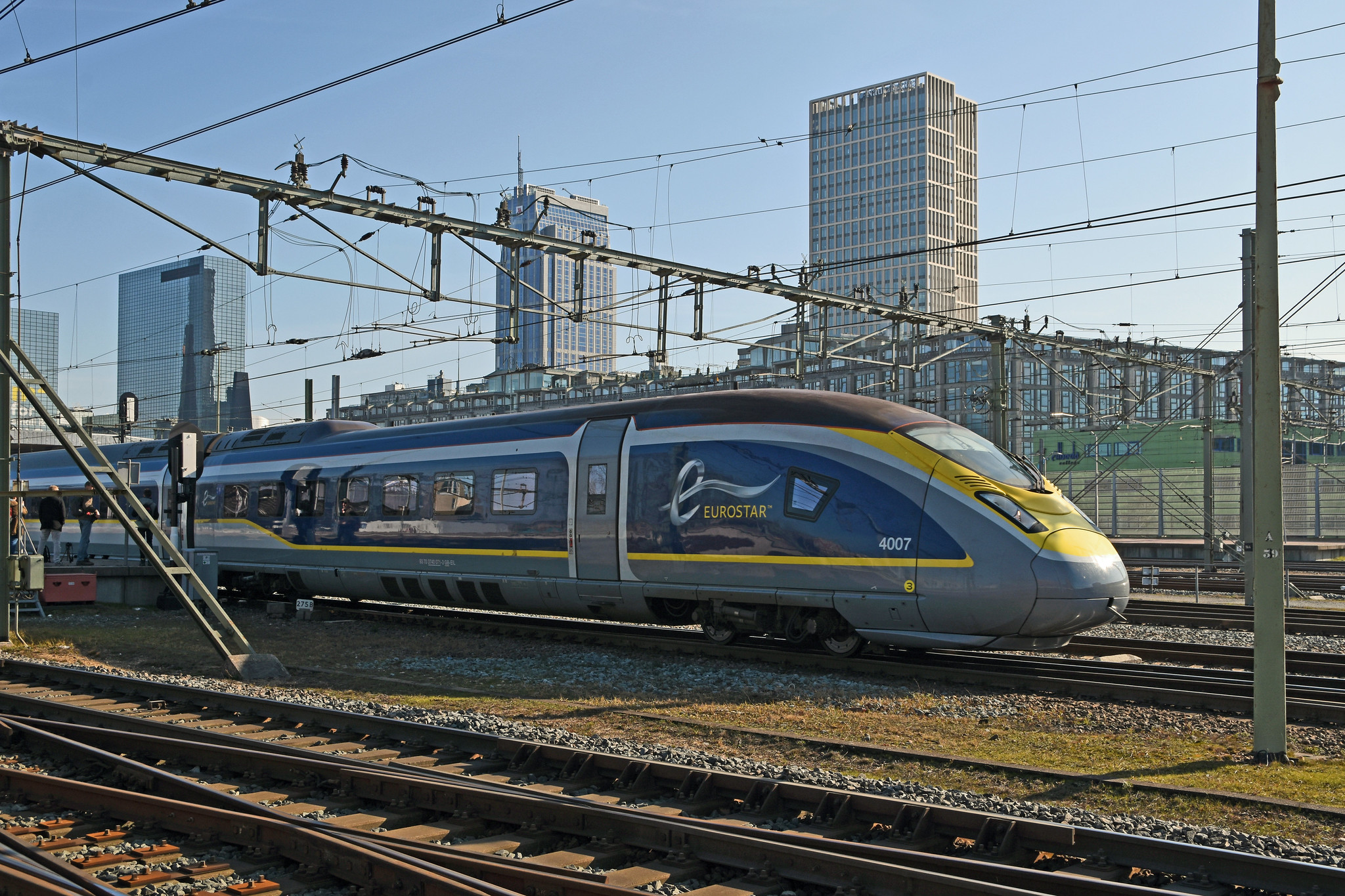
The second generation of Eurostar trains – 16 carriages, distributed traction, 390m length and with 902 seats. Eurostar owns 17 of them, all in service. The trains are built by Siemens, based on their Velaro platform that is also used for different variants of Deutsche Bahn’s ICE trains.
These trains have been fitted with ETCS and ATB to allow operation in Netherlands from the outset. Operation in Germany (or even Switzerland) under 15kV electrification would theoretically be possible, but approval has never been formally sought for either country.
There is not really any scope to run any more services with these trains, as they are the backbone of Eurostar’s fleet currently – the only opportunity for short term expansion would be to use these trains for new services (more trains to Netherlands, or theoretically trains to Germany) and deploy more e300 trains in Belgium and France. And there is definitely no scope to lease or sell any of them to anyone else.
Deutsche Bahn ICE3 Class 406

Class 406 is the train Deutsche Bahn approved to run through the tunnel in 2013, but Deutsche Bahn has never run a regular service to London, and indeed these trains will never run to London in future either, so the technical details of these trains are not really of great concern here. This series – of which Deutsche Bahn owns 17 – currently operate Bruxelles-Frankfurt and Amsterdam-Frankfurt services, and have had a very questionable operational history. At least two of them have caught fire, and the reliability of the rest of the fleet is very poor, resulting in regular delays and cancellations on the routes on which they do operate. Rather than perform a standard mid-life maintenance on these trains, DB will instead remove the multi-voltage equipment from the trains, and in the future run these in Germany only. So for the sake of Channel Tunnel operations in future, ICE Class 406 can be ignored.
Possible future rolling stock
As there is little scope for increasing operations using existing rolling stock, what opportunities would their be for a new design of train to be used for long distance passenger services through the Channel Tunnel? Thankfully the answer to that is that there would be opportunities for something new, although not without some potential drawbacks.
Siemens Velaro
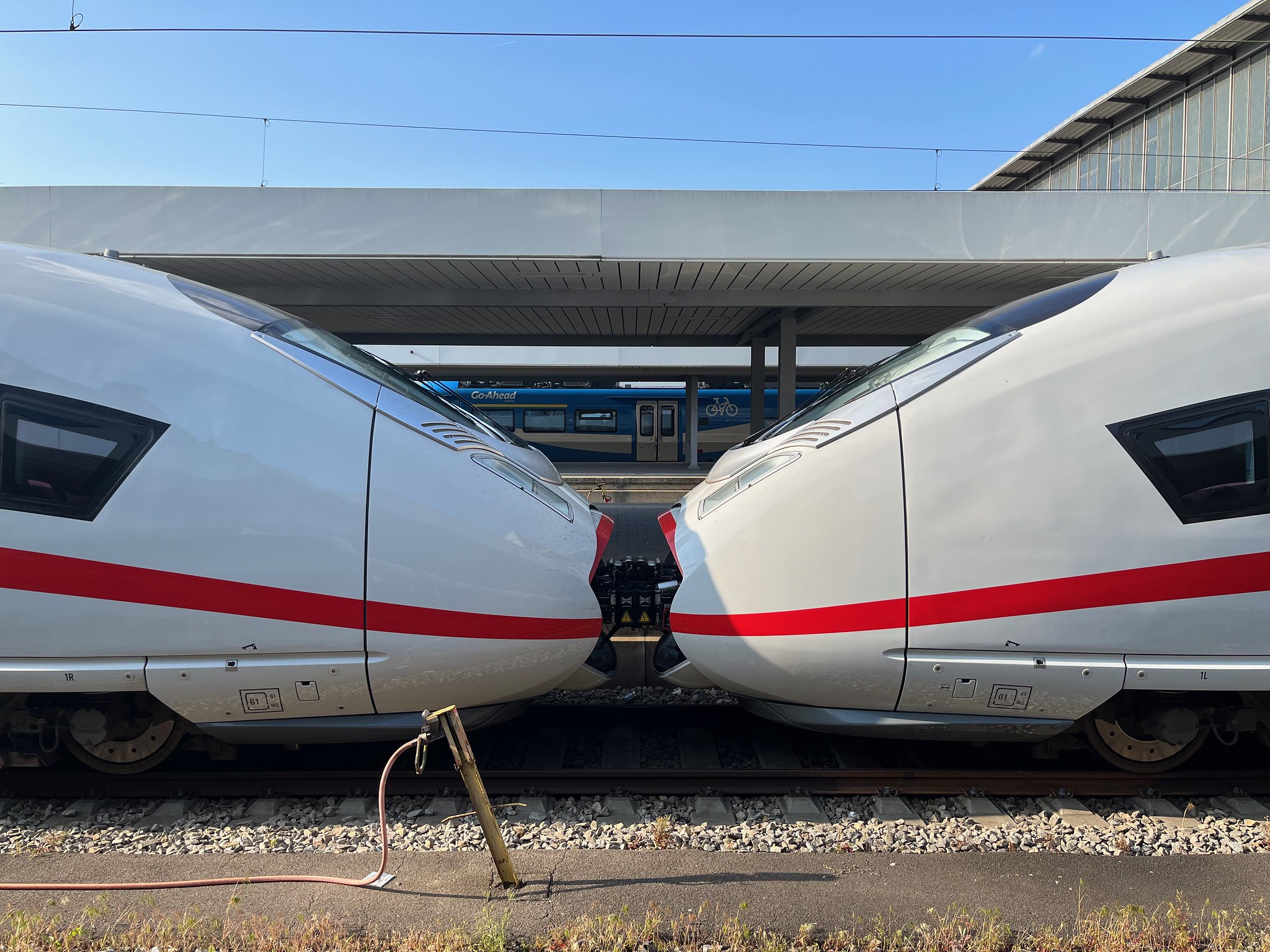
Siemens has continued to develop its Velaro platform, and is currently in the middle of the delivery of 90 ICE3neo Class 408 trains for Deutsche Bahn. These trains are 4 voltage (1.5kV dc, 3kV dc, 15kV 16.7Hz ac, 25kV 50Hz ac). Each train is 200m long, seats 439 passengers, and running 2 together to make a 16 carriage train is possible. Approval for Germany, Netherlands and Belgium is foreseen from the outset, with signalling and safety systems for these countries, but not including TVM430 and KVB (necessary for LGV Nord and High Speed 1). DB’s earlier Class 407 ICEs (also Velaro) do have TVM430 and KVB, but given DB only has 17 of those and they are currently in use on services between Paris and Germany, means deploying these to London would need something to replace them – and whatever that would be would need at least KVB to reach Paris Gare de l’Est. So – short to medium term – using either Class 407 or 408 ICEs to London is unlikely.
A new operator could of course place an order with Siemens for a Channel Tunnel compatible Velaro variant (with TVM430, KVB and ETCS from the outset), but given the Siemens plant in Krefeld has more than 60 more ICE408s to build, plus 41 8-carriage Velaro trains for Egypt, it would be likely at least 2028 and more likely 2030 before such a train would run.
Hitachi ETR 1000
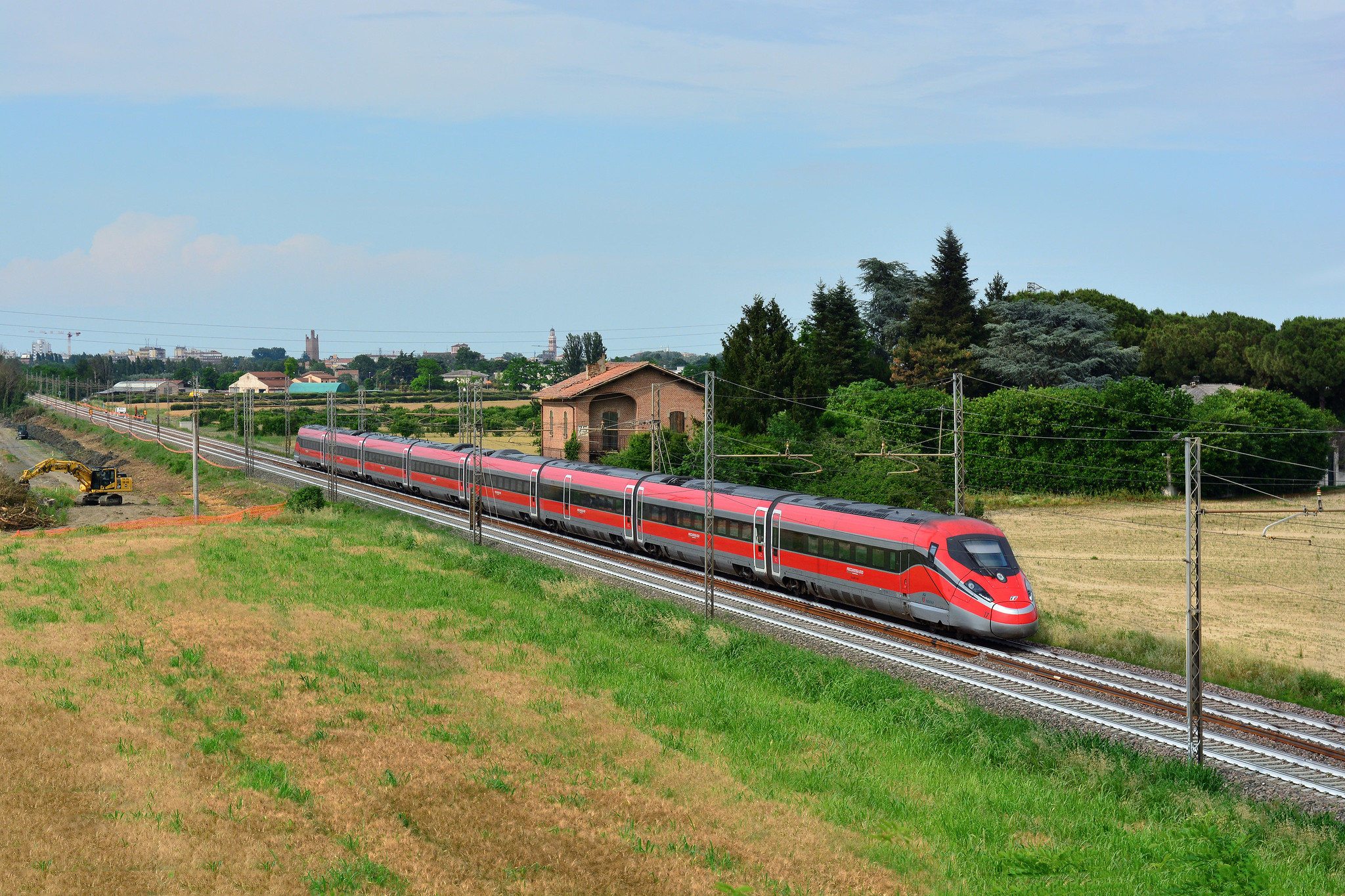
Also known as Frecciarossa 1000, ETR 400 or V300 Zefiro. Trenitalia already has a fleet of 64 of these trains, and in joint venture Iryo 23 more run in Spain. At least 30 and possibly as many as 40 more are on order, to be delivered from 2026. These trains are 4 voltage (1.5kV dc, 3kV dc, 15kV 16.7Hz ac, 25kV 50Hz ac). Each train is 202m long, seats 455 passengers, and running 2 together to make a 16 carriage train is possible.
Three sub-versions of the trains exist – for Italy, for France and Italy, and for Spain. The France and Italy version is the most interesting here, given it has TVM430 and KVB (and indeed even TVM300 to use LGV Sud Est), and all ETR 1000 variants have ETCS. This means that Trenitalia already has trains that fulfil the main requirements to run from Paris Nord to London St Pancras, although – I think – only 14 of them, and this fleet is also needed for Milano-Paris and Lyon-Paris services. Running to Bruxelles Midi with ETCS from 2026 would also be possible.
Given the outstanding orders for these trains for Trenitalia, they would be in prime position to be able to operate to London, starting earliest 2026/27. Were anyone else to order ETR 1000 trains, these would likely not be delivered until the end of this decade.
Talgo Avril
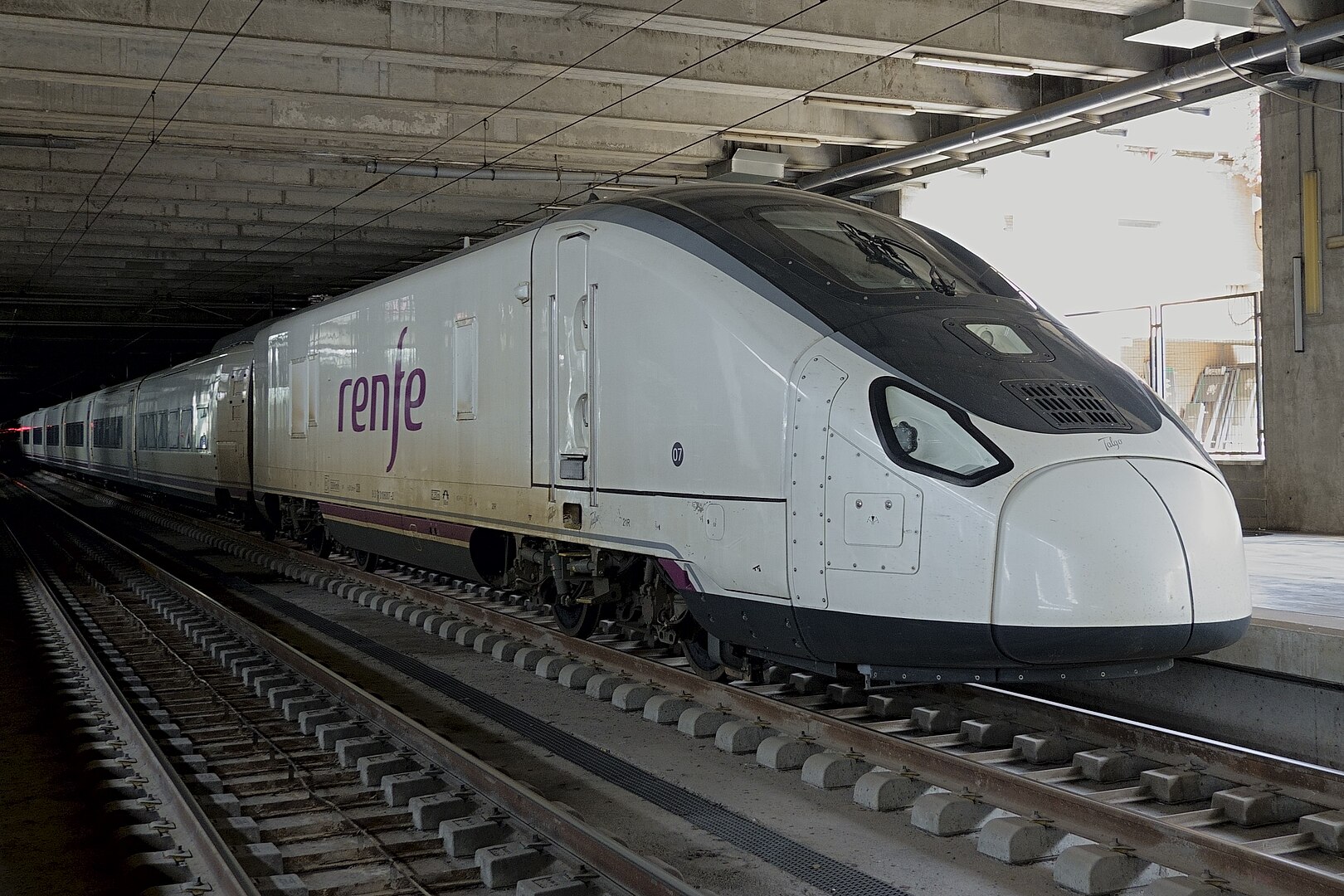
Known as Avril by the manufacturer, Spanish state owned operator Renfe ordered 30 of these trains – known as Renfe Series 106. These trains are 3 voltage (1.5kV dc, 3kV dc, 25kV 50Hz ac), and 10 of them will be equipped with signalling systems for France from the outset. Each train is 202m long, seats 521 passengers, and the design allows two of them to run coupled together. Renfe has had problems with approvals with TVM300 in the past, but not with TVM430 – so it is safe to assume these trains would be OK to run from Paris Nord to London from the outset. However at the time of writing, EU Agency for Railways has only approved these trains for operation in Spain and not in France (search Serie 106 here).
Talgo is currently building trains for Deutsche Bahn and DSB, and also has a contract for 10 trains with Le Train – for a train of a very similar design to the Renfe 106, and to only operate in France, and due to be in service by the end of 2025. Assuming the approval headaches in France are ironed out, using a Talgo Avril / Renfe 106 derived design would likely be the swiftest way for a new operator to acquire rolling stock that could be used for the Channel Tunnel – probably in 2026 or 2027.
Alstom Avelia Horizon
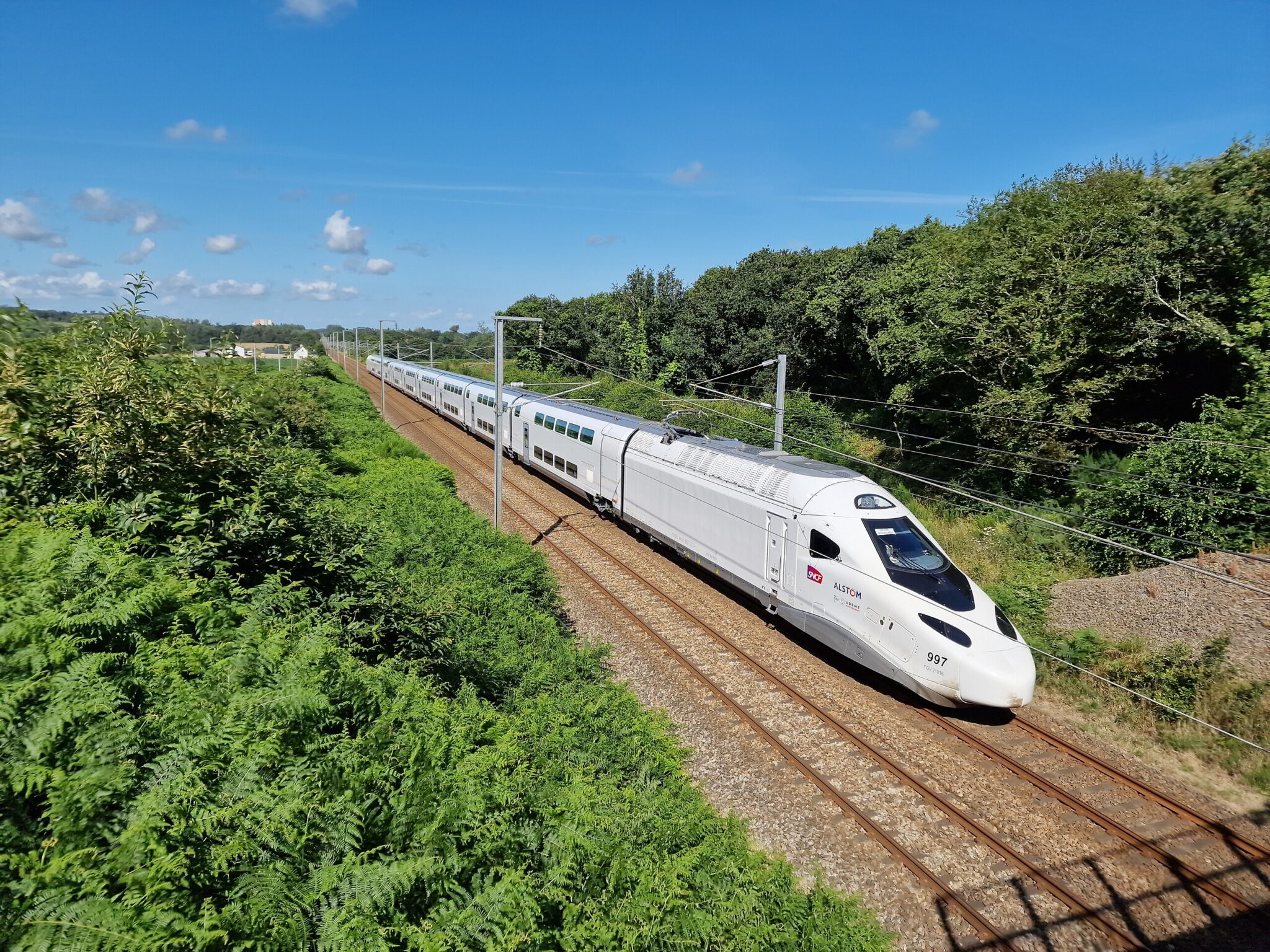
The original Eurostar e300 trains were an Alstom-derived design, and while the company has not built anything for use through the Channel Tunnel in three decades, there is no reason why in principle it could not do so. The most obvious option would be a version of its forthcoming TGV M / Avelia Horizon design – essentially an updated 200m long, double decker design, that would seat around 600 passengers per train – more than anything else on the market with the same length. Loading gauge on LGV Nord and High Speed 1 is adequate for a double deck design.
However the problem is that SNCF has 115 TGV M trains on order from Alstom, and the first is only likely to run in 2025, meaning production lines are going to be full manufacturing these trains until the end of the decade. 15 of the ordered fleet are intended for international use by SNCF, with no indication that these would go to Eurostar (55% owned by SNCF), not least because SNCF needs a replacement for its ageing TGV Réseau fleet. Anyone else ordering Alstom trains – either Eurostar or a new operator – would likely be waiting until into the 2030s.
I suppose in theory a Avelia Stream / New Pendolino design could be adapted for the Channel Tunnel, but given its maximum speed of 250km/h and not 300km/h I do not consider this a serious option. As no one has ordered a Alstom AGV design for more than a decade, I think that option likewise merits no further consideration.
Other manufacturers
Stadler’s Giruno likewise tops out at 250km/h, and while it was designed for the Gotthard Base Tunnel (with its strict fire regulations), I cannot see any Channel Tunnel operators ordering them, nor SBB – the only current operator of this design – adapting any of its small-ish fleet of 36 trains to operate to London, not least as the 250km/h speed would pose path problems on long 300-320km/h high speed line sections through France.
CAF’s Oaris platform theoretically is capable of speeds of up to 320km/h, but so far only one small order has been made by Norway’s Flytoget – for speeds of up to 250km/h. Approvals for this design would have to start more or less from scratch, so would mean this is no short to medium term solution.
Importing high speed trains from China is likewise not given consideration here – approval of lower speed Chinese designs for Westbahn and Leo Express has not been successful, so I cannot see how this would work, short term, for high speed trains either.
Operators
Eurostar
 The only existing long distance operator. Has pursued a retrenchment strategy since the COVID pandemic, with a focus on the biggest cities and its core routes, and upping its returns per passenger rather than reaching new customers. Stations such as Ebbsfleet and Calais-Fréthun will not be served in 2024, and short term its priority is the expansion of the service to Amsterdam, and possibly the re-introduction of some seasonal services (summertime to the south of France, wintertime to the Alps).
The only existing long distance operator. Has pursued a retrenchment strategy since the COVID pandemic, with a focus on the biggest cities and its core routes, and upping its returns per passenger rather than reaching new customers. Stations such as Ebbsfleet and Calais-Fréthun will not be served in 2024, and short term its priority is the expansion of the service to Amsterdam, and possibly the re-introduction of some seasonal services (summertime to the south of France, wintertime to the Alps).
Medium term its strategy is not as clear. Its merger with Thalys (now also branded Eurostar) gives it a foothold in Germany, but no rolling stock currently approved to run from there to UK. Most of the ex-Thalys fleet is approaching the end of its service life, as are its remaining e300 trains – so at some point the company is going to have to order something new. Eurostar claims it wants to double its passenger numbers by 2030, but has no discernible strategy to allow it to do so. However as the incumbent operator it still is the standard by which anyone else will be judged.
Renfe
 It has all gone quiet from Renfe since announcing in 2021 that they intended to run trains through the Channel Tunnel. However given that they ought to have 10 Series 106 trains available that ought to be able to be approved for Channel Tunnel operations reasonably easily, and that ordering more such trains from Talgo would be possible, they cannot be completely ignored, medium term.
It has all gone quiet from Renfe since announcing in 2021 that they intended to run trains through the Channel Tunnel. However given that they ought to have 10 Series 106 trains available that ought to be able to be approved for Channel Tunnel operations reasonably easily, and that ordering more such trains from Talgo would be possible, they cannot be completely ignored, medium term.
Trenitalia
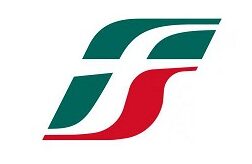 Italy’s state owned railway company has been pursuing an aggressive international expansion – rivalling SNCF between Milano and Paris, setting up the Iryo joint venture in Spain, and proposing to run international trains from Netherlands to France and Germany in 2027 through its subsidiary Qbuzz. However it has never had concrete plans to run to London, despite actually owning trains that could be used for that purpose. My assumption is that Trenitalia realises the operational headaches of running to London are all sufficiently difficult to mean focusing on other routes makes more sense. Never say never, but I cannot see Trenitalia stepping into this market this decade.
Italy’s state owned railway company has been pursuing an aggressive international expansion – rivalling SNCF between Milano and Paris, setting up the Iryo joint venture in Spain, and proposing to run international trains from Netherlands to France and Germany in 2027 through its subsidiary Qbuzz. However it has never had concrete plans to run to London, despite actually owning trains that could be used for that purpose. My assumption is that Trenitalia realises the operational headaches of running to London are all sufficiently difficult to mean focusing on other routes makes more sense. Never say never, but I cannot see Trenitalia stepping into this market this decade.
Deutsche Bahn
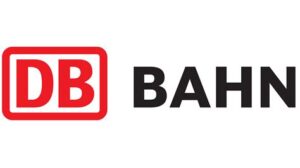 Deutsche Bahn, Germany’s state owned railway company stated recently that it had a “fundamental interest” in operating trains to London, but an interest and an actual plan are two very different things. Deutsche Bahn’s priorities, short term, are stabilising the services from Amsterdam and Bruxelles to Frankfurt, and offering extra services to Denmark and France (possibly including a direct Berlin-Paris ICE). Once that is all accomplished, and the availability of ICE trains for international services is clear, DB could then theoretically re-assess a London route – but I imagine were it to happen it is going to be closer to 2030 than to 2025. And even then the massive headaches with regard to station capacity in Germany might make them decide it is all too much hassle.
Deutsche Bahn, Germany’s state owned railway company stated recently that it had a “fundamental interest” in operating trains to London, but an interest and an actual plan are two very different things. Deutsche Bahn’s priorities, short term, are stabilising the services from Amsterdam and Bruxelles to Frankfurt, and offering extra services to Denmark and France (possibly including a direct Berlin-Paris ICE). Once that is all accomplished, and the availability of ICE trains for international services is clear, DB could then theoretically re-assess a London route – but I imagine were it to happen it is going to be closer to 2030 than to 2025. And even then the massive headaches with regard to station capacity in Germany might make them decide it is all too much hassle.
SBB
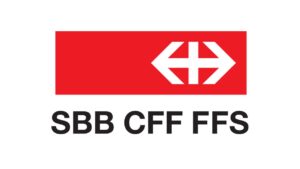 SBB-CFF-FFS, the Swiss state owned railway company, is currently concluding a feasibility study into the opportunity to run direct trains to London. However – as is typical of SBB – this is to be done in cooperation with other railway companies, likely SNCF and Eurostar (SBB already has a cooperation with SNCF – TGV Lyria – that could be adapted for this purpose). There is also political support for the idea. While Genève and Basel could be reached with Eurostar e320 trains, Zürich HB currently could not, and whether Eurostar would even have enough trains for such a joint venture is questionable. I cannot see this working short term, but towards 2030 this might just work out – given the operational ability, political support, and financial solidity of SBB.
SBB-CFF-FFS, the Swiss state owned railway company, is currently concluding a feasibility study into the opportunity to run direct trains to London. However – as is typical of SBB – this is to be done in cooperation with other railway companies, likely SNCF and Eurostar (SBB already has a cooperation with SNCF – TGV Lyria – that could be adapted for this purpose). There is also political support for the idea. While Genève and Basel could be reached with Eurostar e320 trains, Zürich HB currently could not, and whether Eurostar would even have enough trains for such a joint venture is questionable. I cannot see this working short term, but towards 2030 this might just work out – given the operational ability, political support, and financial solidity of SBB.
SNCF
 France’s state owned railway firm SNCF has a 55% stake in Eurostar, but it has a low cost brand – Ouigo – that it has used for international expansion in Spain. Development of a Ouigo-star market segment might make sense – a pack them in and sell tickets cheap alternative to Eurostar’s more premium offer. And the high capacity TGV-M trains on order from Alstom would suit this sort of service. However I cannot see SNCF undertaking something like this alone, but would instead pursue such an idea through the Eurostar Group.
France’s state owned railway firm SNCF has a 55% stake in Eurostar, but it has a low cost brand – Ouigo – that it has used for international expansion in Spain. Development of a Ouigo-star market segment might make sense – a pack them in and sell tickets cheap alternative to Eurostar’s more premium offer. And the high capacity TGV-M trains on order from Alstom would suit this sort of service. However I cannot see SNCF undertaking something like this alone, but would instead pursue such an idea through the Eurostar Group.
Heuro
 Dutch start-up Heuro announced in late 2023 that it intends to run up to 15 trains a day each way between Amsterdam and London, with stops at Schiphol Airport, Rotterdam Centraal and Antwerpen Centraal (peculiarly Bruxelles is not mentioned but surely would be served) and aims to start operations in 2028. The company has not said what trains it would intend to use, only that each train should seat at least 550 passengers. This plan is not without its problems – not least because such a regular service would require a large fleet of trains, and lots of paths (that might not be available). A fleet of trains running by 2028 would, at a push, be possible – but not from any manufacturer. And probably the biggest hurdle of all: the company wants to start from scratch. Sorry, but I have little hope this one is ever going to work, and I am definitely sceptical until a contract to purchase trains is signed.
Dutch start-up Heuro announced in late 2023 that it intends to run up to 15 trains a day each way between Amsterdam and London, with stops at Schiphol Airport, Rotterdam Centraal and Antwerpen Centraal (peculiarly Bruxelles is not mentioned but surely would be served) and aims to start operations in 2028. The company has not said what trains it would intend to use, only that each train should seat at least 550 passengers. This plan is not without its problems – not least because such a regular service would require a large fleet of trains, and lots of paths (that might not be available). A fleet of trains running by 2028 would, at a push, be possible – but not from any manufacturer. And probably the biggest hurdle of all: the company wants to start from scratch. Sorry, but I have little hope this one is ever going to work, and I am definitely sceptical until a contract to purchase trains is signed.
Evolyn
 I have written briefly about Evolyn before, and their plan is even bolder than Heuro’s – to run trains to London by the end of 2025. However their October 2023 annoucement they will purchase 12 trains from Alstom (possibly rising to 15 trains) was rebutted by none other than Alstom itself, stating that nothing had been signed. Exactly what routes Evolyn would run (indeed what countries they would even seek to serve) is unknown, although I presume France-UK would be the focus. Anyway running in 2025 with new Alstom trains is a completely hopeless proposition – as Alstom has some of the longest delivery times – for the reasons stated above. At the moment I see no reason to take Evolyn seriously at all, and I doubt they will ever run anything, but if they ever do sign a contract with Alstom or anyone else then I might revise my view.
I have written briefly about Evolyn before, and their plan is even bolder than Heuro’s – to run trains to London by the end of 2025. However their October 2023 annoucement they will purchase 12 trains from Alstom (possibly rising to 15 trains) was rebutted by none other than Alstom itself, stating that nothing had been signed. Exactly what routes Evolyn would run (indeed what countries they would even seek to serve) is unknown, although I presume France-UK would be the focus. Anyway running in 2025 with new Alstom trains is a completely hopeless proposition – as Alstom has some of the longest delivery times – for the reasons stated above. At the moment I see no reason to take Evolyn seriously at all, and I doubt they will ever run anything, but if they ever do sign a contract with Alstom or anyone else then I might revise my view.
Virgin Trains
 This one is really hard to assess, as we basically have only a newspaper story to go on. Richard Branson and his Virgin Trains brand are well known in the UK, although it is more than 4 years since they last operated. Other than Branson calling on former Virgin Trains boss Phil Whittingham to run the operation, and some speculation that Ebbsfleet and Ashford could be served, we know no more. Indeed it would even be theoretically possible that the Virgin brand could be used as a front for operations by Evolyn or Heuro or someone else. Until more concrete details emerge it is impossible to assess this one.
This one is really hard to assess, as we basically have only a newspaper story to go on. Richard Branson and his Virgin Trains brand are well known in the UK, although it is more than 4 years since they last operated. Other than Branson calling on former Virgin Trains boss Phil Whittingham to run the operation, and some speculation that Ebbsfleet and Ashford could be served, we know no more. Indeed it would even be theoretically possible that the Virgin brand could be used as a front for operations by Evolyn or Heuro or someone else. Until more concrete details emerge it is impossible to assess this one.
Flixtrain
Flix has shown no interest in running to London, and abandoned plans to run from Bruxelles to Paris. Its 200km/h locomotive hauled trains would be complex on High Speed 1, mixed with faster services, and I am not sure their trains would get permission to operate through the Channel Tunnel. At present: no chance.
SNCB
SNCB is 18% owner of Eurostar Group. Has shown little to no interest in international expansion over the past decade. Anything they will do they will pursue through the Eurostar Group.
NS
While NS owns no stake in Eurostar Group, the Dutch state owned railway firm has shown little or no interest in international expansion in recent years, and there is no indication they have any interest.
Conclusions
It’s complicated.
Whatever the hype about expanding services through the Channel Tunnel – either Eurostar expanding its offer, or new rival operators stepping in – the series of hurdles to overcome is enormous.
Foremost among them is the problem of terminal capacity at St Pancras, caused mostly by post-Brexit passport control requirements and the confines of the small terminal, and it being next to impossible to run to anywhere in UK other than St Pancras.
Expansion of services the other way – further into mainland Europe – encounters similar problems, where equipping stations for passport controls and luggage scans is either difficult or impossible, especially in France outside of existing Eurostar routes, and in Germany where the hurdles look insurmountable.
Set all of this against the backdrop of the UK’s pernicious and anti-European politics and a political solution for those problems looks hard in the short and even medium term.
Were all of that to be overcome, a new operator (or indeed Eurostar as well, were it to expand) is going to need new trains. Envisaging which companies could supply such trains is not too complicated, but the timeframe for their delivery means new services would likely only start years after operators would like to be the case.
No problem listed in this blog post is insurmountable alone, but the problems in combination mean I fear that many of these hopes for long distance services through the Channel Tunnel will remain unfulfilled.
Updates
This is Version 1.1.0 of the blog post, correct as of 17.01.2024, 16:45
Changes since version 1.0.0, also 17.01.2024 – I was unaware that ETCS had been completed on the Swiss standard gauge network, so Integra-Signum is no longer needed there. Part of the blog post about signalling amended accordingly. Thanks @Pablo in the comments!
Credits
Thanks to Patrick Dersjant, Graeme Hilton, Martin Hoffmann, Tim Panton, Quixoticgeek, Jorge Martínez López and Skye for posing me the questions to make this piece better. And special thanks to the members of the best Telegram group about railways – you’ve helped a lot with this piece, you know who you are! However all errors in this piece are mine and mine alone.
Creative Commons Images used in this post
 Ant Miller
Ant Miller
Waterloo
October 24, 2007
CC BY-NC 2.0
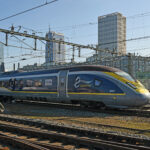 Huib Smit
Huib Smit
Eurostar E320 4007/4008
February 23, 2019
CC BY 2.0
 Michael Day
Michael Day
London: St Pancras International
May 8, 2019
CC BY 2.0
 Albert Koch
Albert Koch
ICE Brussel 406 502-5
September 29, 2012
CC BY-ND 2.0
 FDV
FDV
Renfe Class 106 train at Córdoba railway station
March 27, 2022
CC BY-SA 4.0
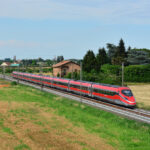 Nelso Silva
Nelso Silva
FS ETR 400.17
June 13, 2023
CC BY-SA 2.0
 Roger Marks
Roger Marks
Ebbsfleet International
April 17, 2010
CC BY-NC-ND 2.0
 Franklin Hunting
Franklin Hunting
Gare Du Nord
June 16, 2008
CC BY-ND 2.0
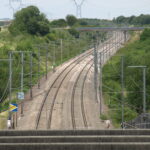 Morten Jensen
Morten Jensen
LGV-Nord
July 21, 2015
CC BY 2.0
 Martin Deutsch
Martin Deutsch
Passport Control
November 8, 2007
CC BY-NC-ND 2.0
 shirokazan
shirokazan
Channel Tunnel Terminal
August 6, 2011
CC BY 2.0
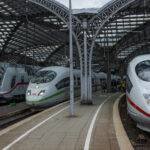 Albert Koch
Albert Koch
Colourful Cologne
September 6, 2020
CC BY-ND 2.0
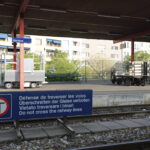 Jared Kelly
Jared Kelly
Geneve – Gare Cornavin
May 1, 2009
CC BY-NC-ND 2.0
 Allain Lloyd
Allain Lloyd
TGV M N°997 en essais sur la ligne Paris Montparnasse Brest entre Plouaret Trégor et Plounérin
July 6, 2023
CC BY-SA 4.0
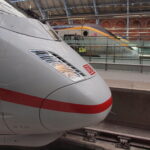 Julian Walker
Julian Walker
German ICE Train at St Pancras
October 19, 2010
CC BY-NC-ND 2.0
The post The future of long distance train services through the Channel Tunnel appeared first on Jon Worth.
Source: https://jonworth.eu/the-future-of-long-distance-train-services-through-the-channel-tunnel/
Anyone can join.
Anyone can contribute.
Anyone can become informed about their world.
"United We Stand" Click Here To Create Your Personal Citizen Journalist Account Today, Be Sure To Invite Your Friends.
Please Help Support BeforeitsNews by trying our Natural Health Products below!
Order by Phone at 888-809-8385 or online at https://mitocopper.com M - F 9am to 5pm EST
Order by Phone at 866-388-7003 or online at https://www.herbanomic.com M - F 9am to 5pm EST
Order by Phone at 866-388-7003 or online at https://www.herbanomics.com M - F 9am to 5pm EST
Humic & Fulvic Trace Minerals Complex - Nature's most important supplement! Vivid Dreams again!
HNEX HydroNano EXtracellular Water - Improve immune system health and reduce inflammation.
Ultimate Clinical Potency Curcumin - Natural pain relief, reduce inflammation and so much more.
MitoCopper - Bioavailable Copper destroys pathogens and gives you more energy. (See Blood Video)
Oxy Powder - Natural Colon Cleanser! Cleans out toxic buildup with oxygen!
Nascent Iodine - Promotes detoxification, mental focus and thyroid health.
Smart Meter Cover - Reduces Smart Meter radiation by 96%! (See Video).





